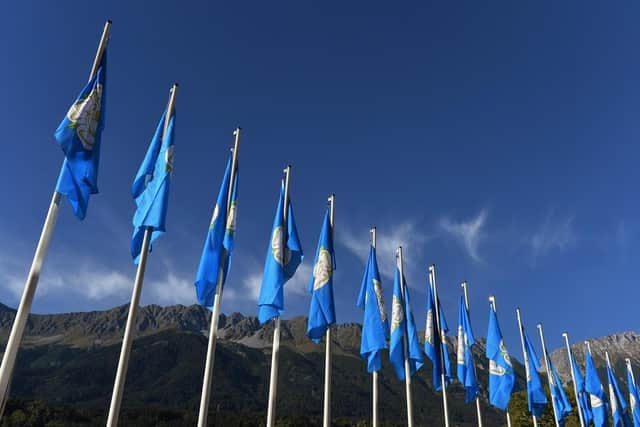What does the Yorkshire flag look like and what does it stand for? How many flags does Yorkshire have? What is the White Rose of York?
Patriotism is rife in Yorkshire and you will notice this soon after you arrive here. The Yorkshire flag is displayed proudly on pubs, shops, cars, streets, churches - everywhere.
But for those who are unfamiliar with Yorkshire and its history, here is everything you need to know about the Yorkshire flag, what it looks like and what it represents.
Advertisement
Hide AdAdvertisement
Hide AdWhat does the Yorkshire flag look like and what does it represent?


The white rose, also known as ‘the mystical rose of Heaven’, inspired the centre feature of the flag.
The rose sits on a sky blue background. It was requested by the Yorkshire Ridings Society and was registered by the Flag Institute only 13 years ago.
According to the Yorkshire Ridings Society, the flag represents all that is strong and resilient about Yorkshire, its people and also offers a symbol of hope in troubled times.
Advertisement
Hide AdAdvertisement
Hide AdThe flag was designed in the 1960s but was only adopted in 1975 when the newly founded Yorkshire Ridings Society used the flag as a way to help safeguard the names and identities of the ancient Yorkshire Ridings, which were scrapped by the government in 1974.
How many flags does Yorkshire have?
Three counties of Yorkshire have their own flags based on the main Yorkshire flag.
East Riding of Yorkshire - this flag was registered by the Flag Institute on April 18, 2013, as the winner of a competition organised in conjunction with it. The flag features a Yorkshire white rose in the middle displayed in the East Ridings style with one sepal at the top, with a bi-colour background of blue and green. The blue symbolises the maritime activities, while the green represents agricultural industries.
North Riding of Yorkshire - This flag was registered by the Flag Institute on May 4, 2013. The yellow edged blue cross represents the colours of the arms attributed to the local saint, Wilfred, a prominent figure in the early history of the region. It is set against a green field, the three colours together refer to the North Riding’s natural features; the green represents the large tracts of the famous North York Moors National Park, while the blue and yellow reflect the North Sea coastline.
Advertisement
Hide AdAdvertisement
Hide AdWest Riding of Yorkshire - It was established by the Flag Institute on May 23, 2013. The flag features a ‘rose-en-soleil’ device first used by Edward IV at the time of his accession to the throne, combining the White Rose of the House of York with the sun emblem used by his royal predecessor, Richard II. The rose-en-soleil is a more elaborate form of the white rose emblem; the rose is placed against a red cross in Scandinavian style, representing the Anglo-Scandinavian history of the region.
What is the White Rose of York?
The white rose is an ancient symbol of purity with religious connotations; it was used by Plantagenet supporters of the House of York in the 14th century and famously represented one side of the Wars of the Roses.
It was first used as a heraldic badge by Edmund of Langley, 1st Duke of York (1341-1402), the fourth surviving son of King Edward III of England. One of his older brothers, John of Gaunt, 1st Duke of Lancaster (1340-1399), used a red rose as a heraldic badge. Their descendants fought for control of the throne of England. The Wars of the Roses were ended by King Henry VII of England who, when he married Elizabeth of York, symbolically united the White and Red Roses to create the Tudor Rose.
White roses were also worn by soldiers of Yorkshire regiments in memory of their comrades who died during the Battle of Minden in 1759 on August 1 - this date is now established as Yorkshire Day.
Comment Guidelines
National World encourages reader discussion on our stories. User feedback, insights and back-and-forth exchanges add a rich layer of context to reporting. Please review our Community Guidelines before commenting.
